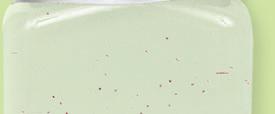












































such as the classroom, Fidget Toys can provide an easy, non-disruptive sensory input that helps to improve overall concentration and learning.
By allowing the brain to filter out extra sensory information, Fidget Toys can also aid in improving co-ordination and dexterity, as well as reducing stress and anxiety.
A simple Ring Fidget can be made using only 2 components!






















1. An even simpler Fidget Toy to make is a Ring Fidget, using split rings and pony beads. Thread some beads onto the split ring. Children can hold the ring and move the beads around. You can even join multiple split rings together to keep both hands busy!


These DIY Fidget Toys contain small parts and adult supervision during construction and use is recommended.























































You can set up the tray with everything in it ready to go, or simply have the materials set out in craft bowls and let the children explore and experiment!




4. Sensory Sand – These brightly coloured sands are a great way of encouraging investigation and experimentation. Children can observe changing states as the sand is pressed into a solid or crumbled through their fingers. It provides a unique tactile feel and makes a great base for Sensory Trays. It’s also easy to clean up as the sand ‘sticks’ together!




5. Patty Pans – The humble patty pan comes into its own in a Sensory Tray! The corrugated sides provide great texture and the colours can be used for sorting activities. They can also be used as scoops or cups to hold other items in the Sensory Tray. Children can use them to group items of the same colour, or for counting activities by adding a certain number of items to each patty pan.
A rainbow theme creates an open play space, but you can theme your Sensory Tray to anything at all!

























6. Trays and Bowls – Our large Exploration Light Tray is perfect for sensory play as the items can be neatly confined, reducing clean up time. Craft bowls can be used at the start of play to organise and separate the different pieces before play begins. This gives the children the opportunity to add objects to the tray in the order they see fit and omit anything they don’t wish to interact with.












































































